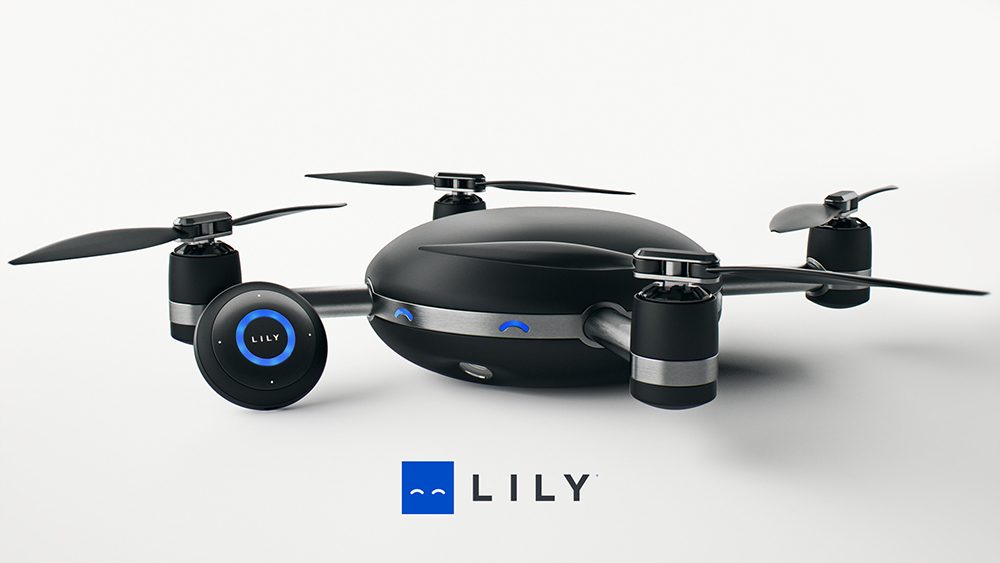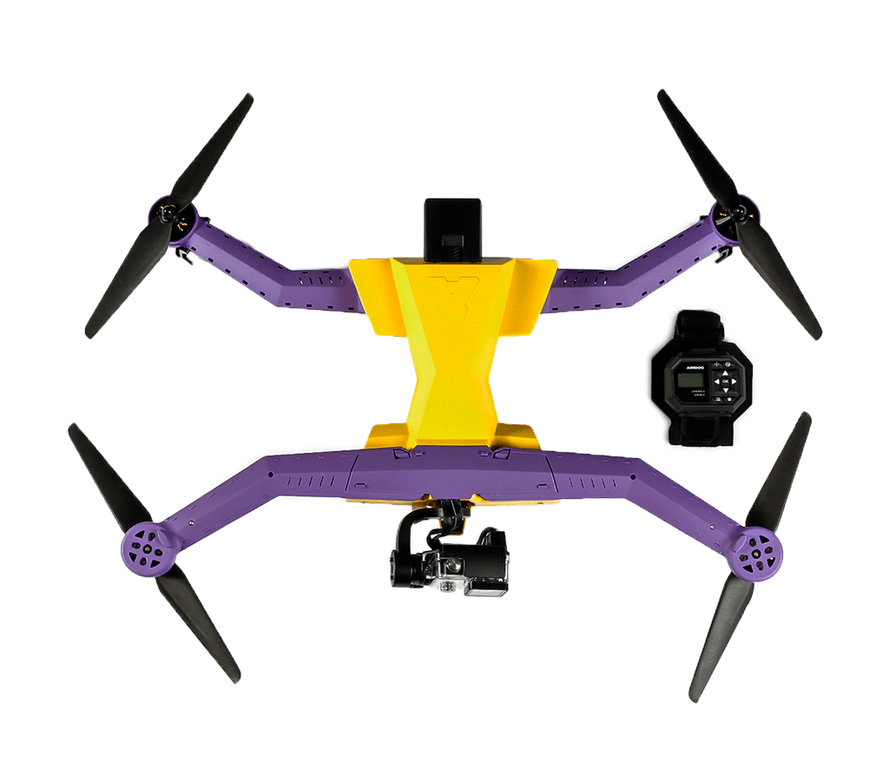There are two new drones in development looking to take the selfie market to new heights. Lily and AirDog are planning to release products that feature sophisticated follow me functionality that allows users to have a drone to shoot video of themselves without the need to pilot the drone.
In addition to being dedicated to taking selfies, the products are also similar in that:
- they are not commercially available. AirDog is looking at an April / May release, and the Lily is hopeful of August of this year.
- they come with a tracking device the user carries. These are shown in the photos below. The Lily comes with a cute button- like object that can be popped into a wrist band; the AirDog has a tough-looking wrist watch thing.
- they both won awards at CES. The Lily recently won a “best in innovations” award earlier this month; the AirDog won a “best in show” from Engadget last year.
- Neither drone has object sensing or collision detection sensors. While you can fly around that tree on your skis, bike or snowboard, these drones will not.
However, there are also significant differences.
The Lily has a polished design and an economical price whereas the AirDog has a rugged look and, based on the specs, is clearly the more powerful bird. Each has its place and will fit a certain style.


The Lily, which the firm defines as “the camera reinvented” is the cheaper of the two by quite a bit ($799 vs $1599). The Lily’s sleek design is not simply aesthetic. It is also water-proof, has a toss and fly capability, and the camera and battery are both built in. The AirDog has a more conventional design. It is not waterproof nor can you simply toss it into the air for take off. That may be a good thing. In demonstration videos of the Lily, the device lands in the users hand. There is no landing support on the device. The AirDog uses a gimbal for stabilization and a battery that can be replaced. The Lily has neither. Image stabilization and long-term battery life are a couple of open questions for the Lily.
Another key difference is that the Lily, the camera reinvented, has a camera. The AirDog does not, though you can plug on a GoPro. What the AirDog has over the Lily is speed and distance. According to specs for the products, the Airodog can travel at 42 mph and a distance of over 800′ from the user vs Lily’s 25 mph and only 100′ from the user.
These drones look like they are pretty cool, and the concept of an autonomous device that can shoot you in all your outdoor glory is a compelling one. However, neither company offered DroneLife a product for testing. In reviewing all the information available, it is our opinion that, as with all drones, it is very important to have a flight plan in mind and an awareness of hazards before the drone is in the air.
Here is how the Lily and Airdog stack up
| Lily | AirDog | |
|---|---|---|
| Dimensions in folded state | 10.29″ x 10.29″ x 3.22″ | 8.46″ x 14.96″ x 3.54″ |
| Weight | 2.8 lbs | 4.38 lbs |
| Flight time | 20 mins | 10 – 18 mins |
| Waterproof | *IP 67 | The AirDog drone is not, the AirLeash is |
| Max speed | 25mph | 42mph |
| Distance from user | 100′ | 820′ |
| Camera | Video Resolution: 1080p 60 fps / 720p 120 fps Video FOV: 94º Video Format: H.264 codec, .mp4 file format Photo Resolution: 12 MP Digital gimballing Image stabilization Fixed focus |
Designed to carry a GoPro camera sold separately |
| Cost | $799 before 8/2016 $999 after Shipping $20 |
$1,599 Shipping free |
| Est release date | August 2016 | April / May 2016 |
Frank Schroth is editor in chief of DroneLife, the authoritative source for news and analysis on the drone industry: it’s people, products, trends, and events.
Email Frank
TWITTER:@fschroth







No need to compare the two as of this week Lily is DEAD
You list the price of Lily as $799, however all current Lily lists the price as $899?
Do you know which price point is accurate?
Lily does seem to be as cute as a bug’s ear…… just sayn’